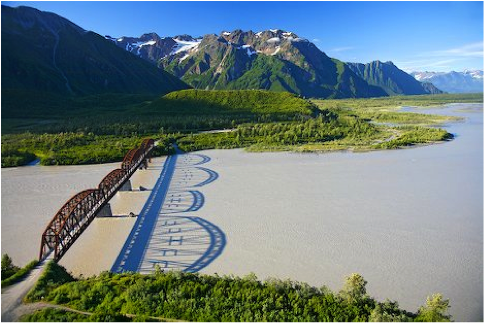Estimating Future Flood Frequency and Magnitude in Basins Affected by Glacier Wastage
PI: Anna Liljedahl (UAF)
Dates: 03/01/2012 – 11/01/2013

Infrastructure, such as bridge crossings, require informed structural designs in order to be effective and reliable for decades. A typical bridge is intended to operate for 75 years or more, a period of time anticipated to exhibit a warming climate and, consequently, hydrologic changes (IPCC 2007). An understanding of present and future possible hydrologic conditions is necessary to avoid damage to critical infrastructure and costly disruptions to Alaska’s transportation network.
Changes in glacier extent in response to climate warming and/or altered precipitation regimes have the potential to substantially alter the magnitude and timing, as well as the spatial variation of watershed-scale hyrologic fluxes. The dominant goal, as highlighted by the ADOT&PF Bridge Section Hydraulic Squad, is to improve estimates of peak flow frequency and magnitude at bridges crossing glacierized basins. This requires an understanding of the coupled hydologic system (glacier to overall watershed), and therefore, a quantification of the role of glaciers on present watershed-scale runoff before we can estimate how climate warming may affect basin-wide discharge regimes. The project approach will include analysis of a) historic hydrologic data sets and b) complementary field measurements and model simulations to provide refined products that meet ADOT&PF needs.
This project’s primary objective is to compare estimates of future flood magnitude and frequency between traditional statistical methods, which sole utilize historic runoff measurements, to physically-based hydrologic model projections.
PacTrans-UAF-Liljedahl-Anna-Project Update-2012-S-UAF-0012
Final Project Report: PacTrans-12-UAF-Liljedahl


